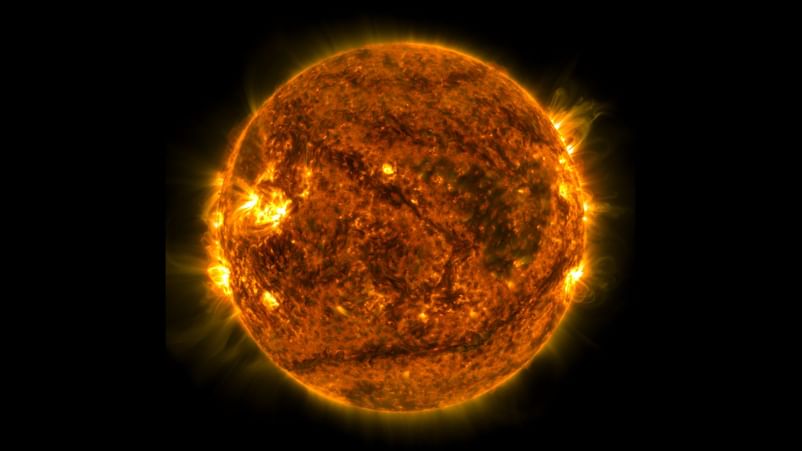Science
NASA Study Reveals Surge in Solar Activity Since 2008

A recent analysis by NASA scientists has uncovered a significant increase in solar activity, contrary to earlier expectations of a prolonged period of low activity. Since 2008, the Sun has shown a marked uptick in activity, suggesting a potential rise in space weather events, including solar flares and coronal mass ejections.
Historically, the Sun follows the well-documented Schwabe cycle, an approximately 11-year pattern characterized by fluctuations in sunspot counts and various solar outbursts. The peak of the current cycle occurred in October 2022, but there are additional periodic variations in solar activity that can last from a few years to thousands of years, named after the scientists who identified them.
Until 2008, solar activity had been on a downward trajectory, reaching its lowest levels on record. At that time, scientists anticipated that the Sun would enter a phase of minimal activity. Contrary to these forecasts, the recent analysis indicates that the Sun is becoming increasingly active, raising concerns about the implications for space weather.
Understanding Solar Activity and Its Impact
Researchers have monitored solar activity since the early 1600s, beginning with observations by Galileo Galilei, who documented sunspots—cooler, darker regions on the Sun’s surface caused by intense magnetic field lines. These sunspots are tracked and numbered by solar scientists, as they are linked to significant solar events such as solar flares and coronal mass ejections, where large quantities of plasma are expelled into space.
These solar outbursts can send clouds of charged particles through interplanetary space, potentially inducing geomagnetic storms when they interact with Earth’s magnetic field. Such storms can disrupt satellites, communication systems, and energy distribution networks, which are vital to modern society. This potential impact underscores the importance of continued monitoring of solar activity.
Historically, the quietest periods of solar activity occurred during two notable stretches: from 1645 to 1715 and from 1790 to 1830. These extended low-activity phases are challenging to predict, which complicates our understanding of solar cycles. The anticipated “deep solar minimum” following 2008 has not materialized as expected, further demonstrating the Sun’s unpredictable nature.
The findings from this study have been published in the Astrophysical Journal Letters. As researchers continue to analyze solar behavior, they aim to enhance predictive models that can aid in safeguarding technology and infrastructure against the effects of intensified solar activity.
-

 World4 months ago
World4 months agoSBI Announces QIP Floor Price at ₹811.05 Per Share
-

 Lifestyle4 months ago
Lifestyle4 months agoCept Unveils ₹3.1 Crore Urban Mobility Plan for Sustainable Growth
-

 Science3 months ago
Science3 months agoNew Blood Group Discovered in South Indian Woman at Rotary Centre
-

 World4 months ago
World4 months agoTorrential Rains Cause Flash Flooding in New York and New Jersey
-

 Sports3 months ago
Sports3 months agoBroad Advocates for Bowling Change Ahead of Final Test Against India
-

 Top Stories4 months ago
Top Stories4 months agoKonkani Cultural Organisation to Host Pearl Jubilee in Abu Dhabi
-

 Science4 months ago
Science4 months agoNothing Headphone 1 Review: A Bold Contender in Audio Design
-

 Top Stories4 months ago
Top Stories4 months agoAir India Crash Investigation Highlights Boeing Fuel Switch Concerns
-

 Sports3 months ago
Sports3 months agoCristian Totti Retires at 19: Pressure of Fame Takes Toll
-

 Business4 months ago
Business4 months agoIndian Stock Market Rebounds: Sensex and Nifty Rise After Four-Day Decline
-

 Politics4 months ago
Politics4 months agoAbandoned Doberman Finds New Home After Journey to Prague
-

 Top Stories4 months ago
Top Stories4 months agoPatna Bank Manager Abhishek Varun Found Dead in Well









